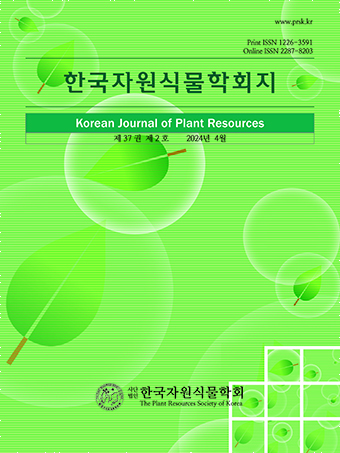Research Article
Abstract
References
Information
Choi, S.Y., J.S. Park, C.H. Shon, C.Y. Lee, J.M. Ryu, D.J. Son, B.Y. Hwang, H.S. Yoo, Y.C. Cho, J. Lee, J.W. Kim and Y.S. Roh. 2019. Fermented Korean red ginseng extract enriched in Rd and Rg3 protects against non-alcoholic fatty liver disease through regulation of mTORC1. Nutrients 11:2963.
10.3390/nu1112296331817227PMC6949916
Her, Y., Y.C. Lee, J.H. Oh, Y.E. Choi, C.W. Lee, J.S. Kim, H.M. Kim and J.W. Yang. 2012. An application of β- glycosidase to transformation of ginsenosides for the effective production of specific ginsenosides with biological efficacy. Biotechnol. Bioprocess Eng. 17:538-546.
10.1007/s12257-011-0678-2
Kim, J.K., J.Y. Kim, S.E. Jang, M.S. Choi, H.M. Jang, H.H. Yoo and D.H. Kim. 2018. Fermented red ginseng alleviates cyclophosphamide-induced immunosuppression and 2,4,6- trinitrobenzenesulfonic acid-induced colitis in mice by regulation macrophage activation and T cell differentiation. Am. J. Chin. Med. 48(8):1879-1897.
10.1142/S0192415X1850094530518233
Kim, J.K., M.S. Choi, W.H. Jeung, J. Ra, H.H. Yoo and D.H. Kim. 2019. Effects of gut microbiota on the pharmacokinetics of protopanaxadiol ginsenosides Rd, Rg3, F2, and compound K in healthy volunteers treated orally with red ginseng. J. Ginseng Res. 44(4):611-618.
10.1016/j.jgr.2019.05.01232617041PMC7322745
Kim, K.A., H.H. Yoo, G. Wang, D.H. Yu, M.J. Jin, H.L. Choi, K.Y. G.D. Laetitia and D.H. Kim. 2015. A prebiotic fiber increases the formation and subsequent absorption of compound K following oral administration of ginseng in rats. J. Ginseng Res. 39:183-187.
10.1016/j.jgr.2014.11.00226045693PMC4452535
- Publisher :The Plant Resources Society of Korea
- Publisher(Ko) :한국자원식물학회
- Journal Title :Korean Journal of Plant Resources
- Journal Title(Ko) :한국자원식물학회지
- Volume : 34
- No :5
- Pages :433-442
- Received Date : 2021-07-23
- Revised Date : 2021-08-02
- Accepted Date : 2021-08-10
- DOI :https://doi.org/10.7732/kjpr.2021.34.5.433




 Korean Journal of Plant Resources
Korean Journal of Plant Resources







